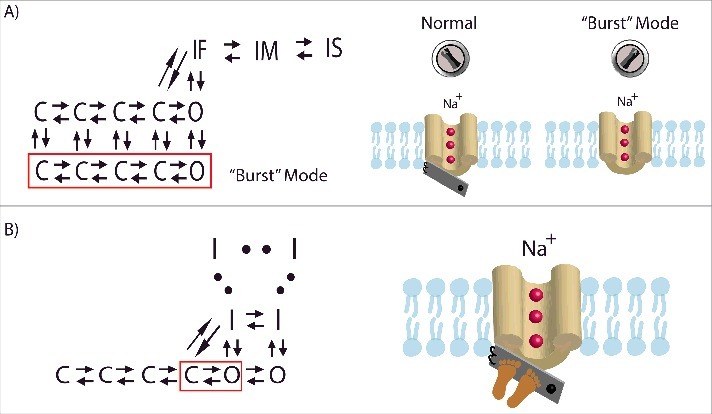Figure 6.

A comparison of the traditional and “feet-on-the-door” models. (A) In the traditional model, a switch induces the channel to enter a separate “burst” mode where inactivation is not possible. Once in the “burst” mode, the channel may not transition back to normal gating. The Markov type representation of this separate “bursting” mode is section of closed and open states (outlined in red) with rate parameters that prescribe periodic “bursting.”134 (B) The “feet-on-the-door” model of Na+ channel inactivation maintains that the IFM motif on the DIII-DIV linker is key for successful fast inactivation and that the C-terminal domain and the DIII-VSD keep the inactivation “door” closed. The corresponding Markov type representation includes a series of inactivated states with increasing stability. Higher stabilization allows the channel to occupy a deeper inactivated state where transitioning back to open and closed states is unlikely. Two open states are included where the rightmost open state has the higher open probability compared with left open state.130 Bursting behavior would be observed when channels occupy the left open and closed states (outlined in red). The extent of stabilization of inactivation determines the magnitude of late INa.
